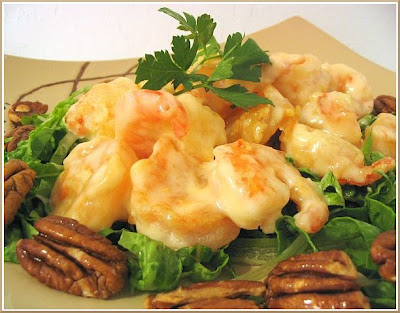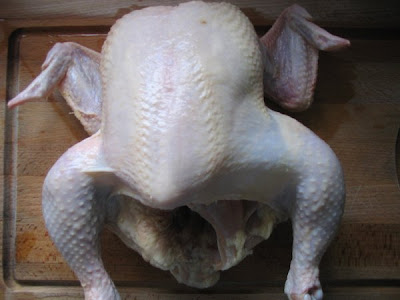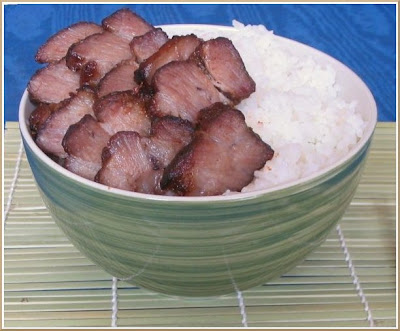
The last time I was wandering the aisles of Trader Joe’s, I curiously looked at a loaf of brioche, and then I proceeded to balk at the price. $4.29 for a tiny loaf of bread! You’ve got to be kidding me! After shunning the expensive brioche (I'm sure this is relative, it was expensive to me), I was determined to make my own. Then one day I thought, “Hmm... what about a honey lavender brioche?” I always get super excited when I think of new ideas like this. I could either use lavender honey or lavender blossoms. Lavender honey is made from the nectar of lavender flowers, produced mainly in France and Spain, but unfortunately, it can be quite expensive. So instead, I picked up some lavender blossoms (much more affordable) at World Spice a few weeks ago.
After purchasing the lavender, I surfed the web looking for a brioche recipe. I thought it was so funny when I read Megnut’s “Mean Chocolate Chip Cookie,” because it's something I do with many of my recipes (though I don’t take it as far as Meg and average the baking temperatures and times). After taking science classes for the last five years, it’s only natural that I approach each new cooking endeavor as a scientific experiment. I gathered about a dozen brioche recipes and compared the ratios of the ingredients; in the case of a brioche, the flour, eggs, butter, milk, yeast, and sugar. For example, I found that the egg content in a brioche recipe can range from 2 to 4 and butter from 4 tbsp to 10 tbsp! Then I take the average or most common measurement of a certain ingredient to create my own recipe.
I replaced sugar with honey for honey brioche but I've never cooked with lavender before so I had no idea how much of the blossoms to use. Using too much lavender can be a deathtrap, resulting in food reminiscent of soap or potpourri. I planned to infuse some milk with lavender. After the milk had cooled, I sniffed it and I could barely detect any lavender fragrance. So I decided to add half of the lavender blossoms into the bread itself to lend its aroma to the bread as it baked. And it worked! The end result was a rich and fluffy brioche with just the light lavender flavor I was looking for. The lavender scent is only noticeable after you finish eating the bread as it lingers ever so delicately on the tongue. It was really very nice, not overpowering at all.
Notes:
- When buying lavender blossoms, make sure to buy culinary lavender specified for cooking not the kind used for soap or candle making (sold in craft shops), which are usually treated with toxic chemicals and pesticides. Store the blossoms in a cool dry location.
- I’m sure you can use lavender honey instead of lavender blossoms in this recipe, just substitute regular honey for lavender honey.
- You can use this recipe to make a regular brioche as well, just omit the lavender and replace the honey with white sugar.
- This is a quick brioche that does not call for an overnight rise in the fridge.
- Some of the recipes I looked at included: Cook’s Illustrated, Thomas Keller, Helen of Tartelette and Epicurious, Freya and Paul, and Bea of La Tartine Gourmande.
Honey Lavender Brioche (or Lavender Honey Brioche)

2 - 2 1/4 C AP flour
1 package instant yeast, about 2 1/4 tsp
1/3 C milk
2 eggs, room temp
3 Tbsp honey
6 Tbsp butter, room temp, cut into 6 pieces
1 tsp of lavender flowers (only 1/2 tsp is added into the bread)
1/2 tsp salt
1 beaten egg for wash
Heat milk until it is very hot but not boiling. You can use a small saucepan but I actually used the microwave. I heated it for 20 second intervals and whisked in between. Add the lavender blossoms to the hot milk, cover, and set aside for 5 - 10 minutes, let the milk slowly cool down until it is warm, about 110ºF. The lavender will infuse into the milk and it allows the milk to cool to a temperature that won't scald the yeast.
(If you're using active dry yeast, wait until the milk has cooled until it's still warm then strain and reserve the lavender blossoms and add the yeast to allow it to proof.)
Add 2 cups of flour, yeast, and salt in the bowl of a stand mixer, whisk to combine. When the milk has finished infusing and is still warm, strain and reserve the lavender blossoms, whisk the honey into the milk then add the milk to the flour. Add half of the lavender flowers, about 1/2 tsp. Add the eggs and mix with the dough hook until the dough comes together. It will look very sticky and shaggy.
With the mixer running, add one piece of butter and wait until it is almost incorporated before adding the next. Add the butter piece by piece, then knead the dough for 5 minutes. If the dough looks too sticky, add some more flour, up to 1/4 C total. The dough should still be sticky and stick to the bottom of the mixer bowl but it shouldn't be absolutely unmanageable. Put the dough in a lightly greased bowl, cover, and set aside in a warm place and allow it to rise until doubled, about an hour.
Lightly flour a work surface. Cut a piece of parchment for the bottom of a loaf pan and grease the sides of the pan. Gently pry the dough out onto the work surface and divide in half. Then divide each half into 3 sections. Roll each section into a ball and place them in a loaf pan, 2 x 3. Cover, and set aside to let rise for another hour.
Meanwhile preheat the oven to 350ºF and adjust the oven rack to the lower middle position. My loaf rose pretty high so baking on the middle position would have caused the top to get too brown.
After the loaf finishes the second rise, brush the top with the beaten egg (probably won't use all of the egg). Bake for 35 - 40 minutes, or until the loaf sounds hollow when the pan is tapped. If you notice the top is getting too brown during baking, cover the top with a piece of foil to sheild it. If you notice that the top isn't getting brown enough, move the loaf up to the middle rack.
Take the loaf out of the pan and let it cool for 15 minutes before digging in (if you can wait that long). It was delicious drizzled with some more honey.
This will be my entry for Weekend Herb Blogging, an event created by Kalyn of Kalyn’s Kitchen and hosted this week by Ellie of Kitchen Wench.













































